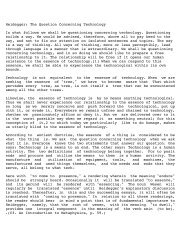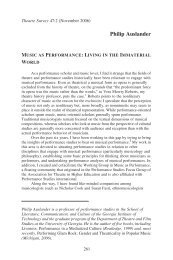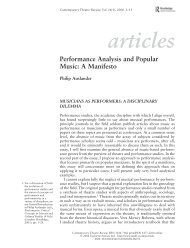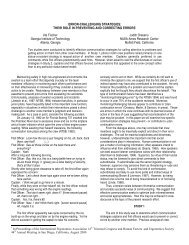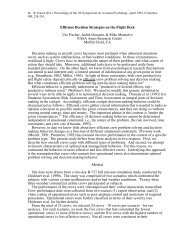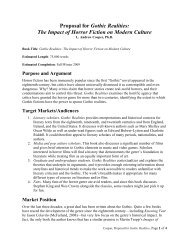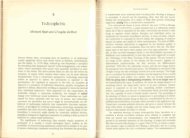INTERACTION DESIGN PRINCIPLES FOR INTERACTIVE ...
INTERACTION DESIGN PRINCIPLES FOR INTERACTIVE ...
INTERACTION DESIGN PRINCIPLES FOR INTERACTIVE ...
You also want an ePaper? Increase the reach of your titles
YUMPU automatically turns print PDFs into web optimized ePapers that Google loves.
on any television set where the image is cropped to 4:3. Therefore, these areas should<br />
contain only background information. All navigation and relevant iTV components must<br />
be kept in the center cut-out safe zone. Also, the entire application may be shrunk to 75%<br />
of its original size to fit in a letterbox format on a 4:3 set. In this case, any text on the<br />
screen must be large enough to remain legible (Baker, 1999).<br />
4.2.3 Resolution<br />
The maximum resolution of NTSC television sets is 720 x 486 pixels (compared<br />
with computer monitors, which are 800 x 600 pixels or better). HDTV, on the other hand,<br />
can have a resolution of up to 1920 x 1080 pixels. In addition, whereas the NTSC format<br />
uses rectangular pixels, the HDTV format is composed of smaller, square pixels,<br />
resulting in a noticeably crisper image. Figure 4.7 illustrates that a single pixel on a<br />
NTSC TV is about four and half times larger than a pixel on HDTV (Cringely, 1998).<br />
Figure 4.7 Comparison of NTSC vs. HDTV Pixels<br />
More importantly, because most computer monitors also use square pixels, HDTV<br />
is more compatible with computers in terms of design and image distortion.<br />
To compensate for the distortion that occurs when the same image appears<br />
horizontally stretched on an NTSC compared to a television screen due to the difference<br />
in pixel size, design work on a computer should be done on a file that is 768 x 576 pixels.<br />
This dimension is optically correct for a 4:3 aspect ratio (British Broadcasting<br />
Corporation, 2002).<br />
89



